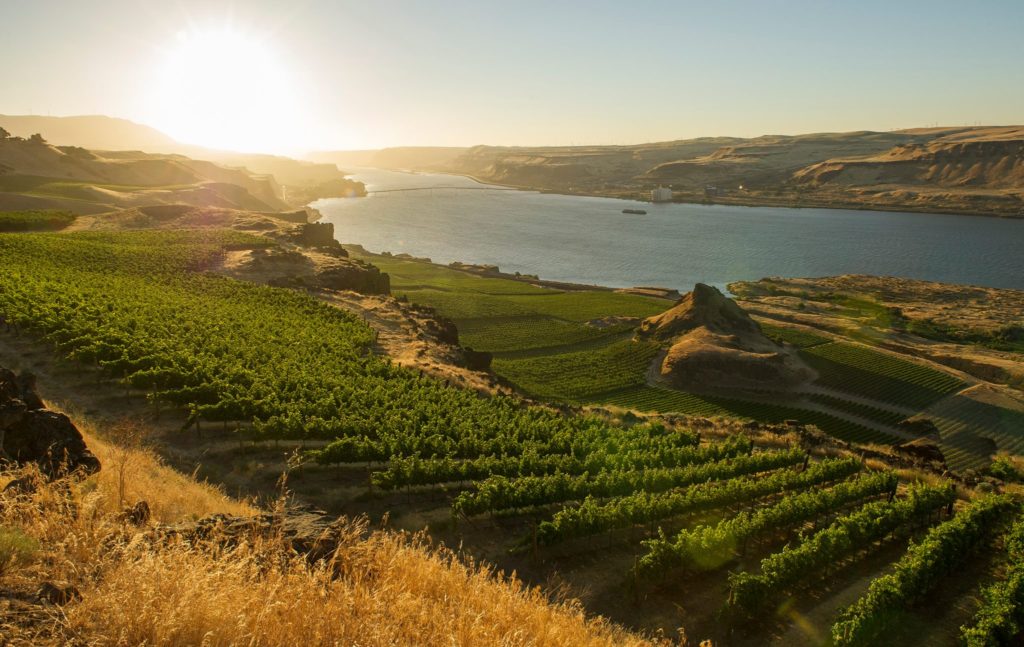Three years ago, (practically 4 now), I dived, head first into the wine industry by signing up for CMS Introductory Level. All roads lead to Rome, well in this case, on scouring the internet, all sources steered me to Guild of Sommelier, a non-profit member based organization. Today, I can single-handedly credit my success in acquiring wine certifications such as Certified Sommelier and WSET Level 3 in wine and spirits to the Guild. It’s a nonpareil and invaluable on-line resource, encompassing all things wine, that till date, I revert too, as my daily reference point.
The Guild has not only been instrumental in achieving my accomplishments, it enriches our lives by inspiring respect, promotes camaraderie and mentorship, in turn strengthening our local wine community. If you are pondering a career in the wine industry or are simply seeking a deeper immersion into the magical elixir we mortals humbly call wine, I suggest you sign up for Guild Somm, TODAY. You can thank me later!!
Recently we attended yet another enthralling Guild Master Class hosted by the cerebral orator, MS Christopher Tanghe, showcasing the prolific wines from his adopted home state – Washington. First, a brief insight into how Washington state (twice the size of Portugal) has emerged as one of the preeminent wine making regions of the world, producing high quality wines spanning a spectrum of flavors and textures, in a relatively short period of time.
WA’s dynamic growth skyrocketed from zero AVA’s in 1960s to 3 AVAs and 19 wineries in 1985 to sporting 900+ wineries in 2017, sprawling over 14 AVAs, and a thriving $2+ billion industry.
As per Chris Stone – VP Marketing & Communications with Washington State Wines, literally one winery has opened every week in the past 12 years. Between financial approach ability (1/10th the land price tag of California), northerly latitude (47°) and wide diurnal shift (40°) that provides the indispensable sunlight for long, even ripening, and the crisp, cool nights to ensure that grapes retain their vibrant acidity, moderating effects of rain shadow by two mountain ranges – Cascade & Atlas, arid conditions that allow for sustainable practices as there is little or no risk to fungal infections, while water stress creates high quality wines, one can easily be convinced as to how Washington State is a premium wine-growing region.
While hazards such as winter freeze and frost, prevalent in continental climates (Champagne, Burgundy, Canada, WA) are typically mitigated with canopy management (high wire training, delayed winter pruning), site selection, and fans/windmills. Combating excessive heat on the other hand, is a serious concern in warmer parts of the state (climate change is REAL, a hot topic that merits an exclusive article).
Sip on this: Dosage (liqueur d expedition = a mixture of sugar + wine), an essential ingredient in Champagne and Sparkling wine production, is incorporated to achieve balance and complexity from Champagne’s austere, high acid structure. Climate change is one of the crucial reasons why from as early as 1990s, Champagne wine makers to adapt to a warmer future commenced tinkering with dosage levels and introduced Brut Nature or Brut Zero to their global consumers.
Washington’s short but luminous wine-making history can be lauded to:
Dr. Walter Clore – “Father of Washington Wine”, an Oklahoma transplant, horticulturist, who tested 250+ American, European and hybrid varietals.
Associated Vintners (AV) – founded by a group of University of Washington’s academic professors – Lloyd Woodburne (Psychology), Dr. Angelo Pellegrini (English), Dr. Cornelius Peck (Law), & more who paved the way for the 1st commercial winery focused on European varietals, hiring wine maker David Lake (who earned his Master of Wine in 1975, while I was still in diapers), and rest is history.
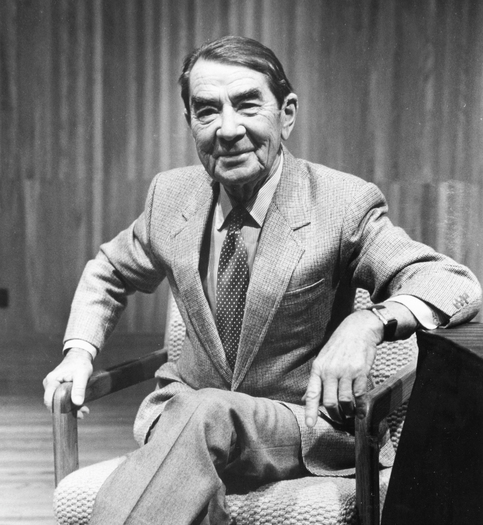
The man behind some of the most important labels of our generation Andre Tchelelistcheff, also the Godfather of post-prohibition wine-making, came to California in 1983 (Georges de Latour at Bealieu Vineyard), collaborated with numerous emblematic wineries including Chateau St. Michelle. His nephew Alex Golitzin launched one of WA’s critically acclaimed winery – Quilceda Creek. And the baton has been handed to his great nephew Paul Golitzin, winemaker at Quilceda. The film Voice of Wine attempts to capture Andre’s accomplishments and epic journey.
With nearly 70 varietals of commercially viable plantings, the shining stars of WA are: Cabernet Sauvignon is king followed by Merlot, Chardonnay, Riesling, Syrah, Sauvignon Blanc, Pinot Gris, Cabernet Franc, Malbec, Geuwrztraminer, Viognier, Sangiovese, Grenache Noir, Petit Verdot, Pinot Noir, Semillion, to name a few, producing from classic to eclectic styles at wallet-friendly prices.
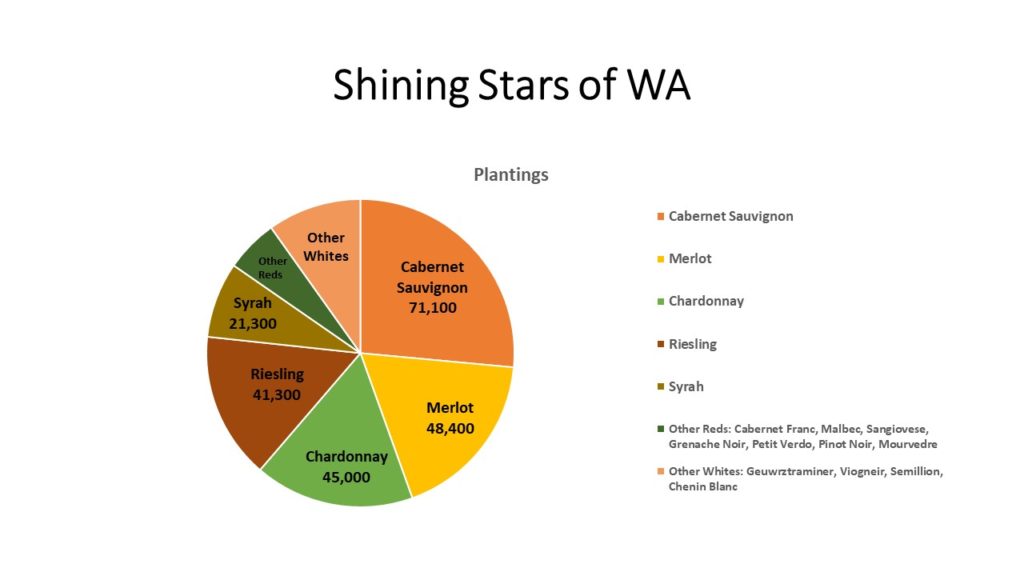
Columbia Valley AVA is the largest appellation in the state, circumscribing 11 of the 14 federally recognized AVAs in the state, that extends all the way to Idaho on the East and Oregon to the South.
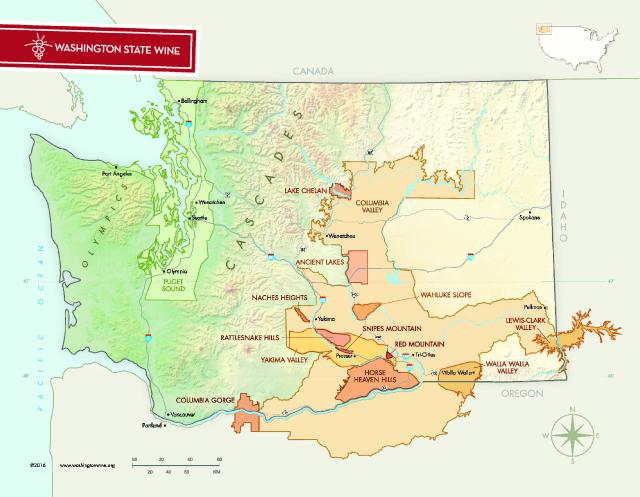
Shall we taste?
Typically adorning a supporting role in the rich wines of Southern Rhone – Châteauneuf-du-Pape as GSM, also called Monastrell (Spain) and Mataro (US/Australia), Mourvèdre was resurrected in 1980s, by the original Rhone Rangers (Bob Lindquist of Qupé winery and Randall Grahm of Bonny Doon), elevating it to mono-varietal or Mourvèdre -dominated status. A late budding and late-ripening grape, this tough grape has settled beautifully in WA’s continental climate.
Seduced by the sexy siren Syrah, the youngest person to achieve the coveted title of Master Sommelier, Greg Harrington went from becoming a MS at 26, founder and winemaker for boutique winery Gramercy Cellars in 2005, to earning the “Best New Winemaker in Washington” in 2008 followed by “Best New Winery in America” in 2010, and the accolades are still rolling. To learn more about this pragmatic over-achiever- pop a bottle of Gramercy Cellar’s syrah and relish it alongside Levi Dalton’s in-depth interview at I”ill drink to that.
Sourcing fruit from some of the most exalted vineyards in the state, the 2014 L Idiot du Village Mourvèdre boasted red berries, perfume, crunchy texture, a serious effort with scrumptious potential.
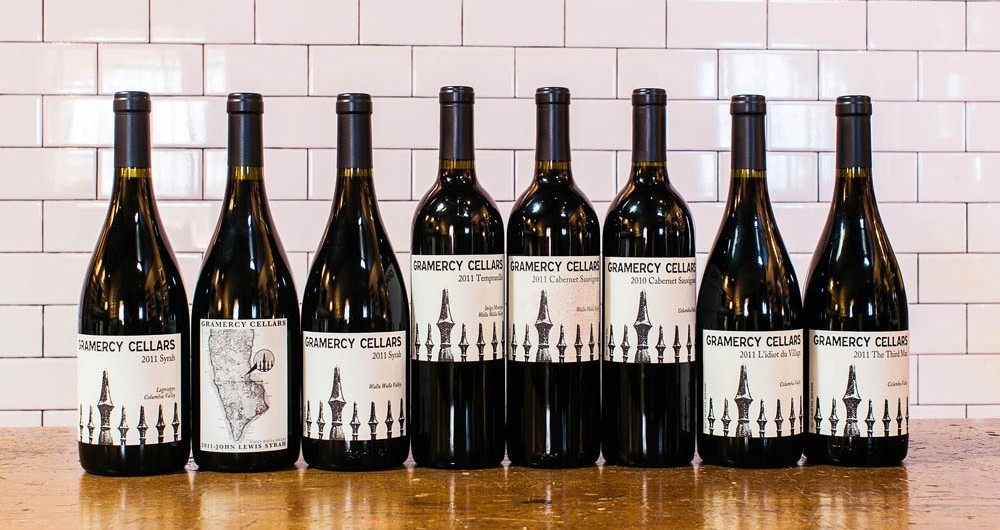
The world deserves more Cabernet Franc, period. It beats me why the parent of super-star Cabernet Sauvignon receives such little love? Luckily for those who dig the tantalizing pepper and herbal nuances of CF, meet Chris Camadara, fellow CF lover and founder/winemaker at Andrew Will Winery. The budget friendly black label 2015 Cabernet Franc sourced from Columbia Valley was singing with succulent berries, savory herbs, softly-scented sweet spices, and held together with fantastic concentration and lingering finish. Bellissimo!!
With the exception of Columbia Gorge and Puget Sound, all of Washington’s wine-growing regions are sub-appellations of the Columbia Valley.
Straddling the western side of the Cascade Mountains, with proximity to the Pacific and maritime climate, Puget Sound is the coolest and wettest region in WA.
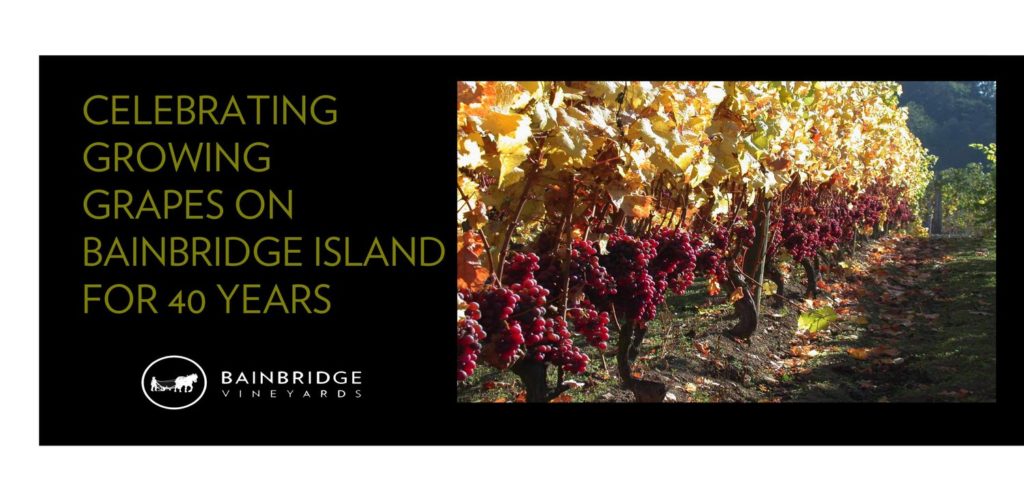
One of the rewarding aspects of our occupation is discovering new wine concepts, new vineyards, and incredible tastes. Unashamed I confess, till this week, I was clueless of this white grape’s existence. Native to the Loire Valley, Madeleine Angevine is typically consumed as a table grape. Mother to several wine grapes, Madeleine Angevine is fittingly cultivated by the matriach of Bainbridge Island’s EduCulture horticulturist Betsy Wittick, who also operates the Laughing Crow farm and Bainbridge Vineyards. Delicate floral notes dancing in the glass with lively acid, the 2015 Brainbridge Vineyards Madeleine Angevine, calls for a bowl of lip-smacking Peruvian ceviche or pristine slices of sashimi.
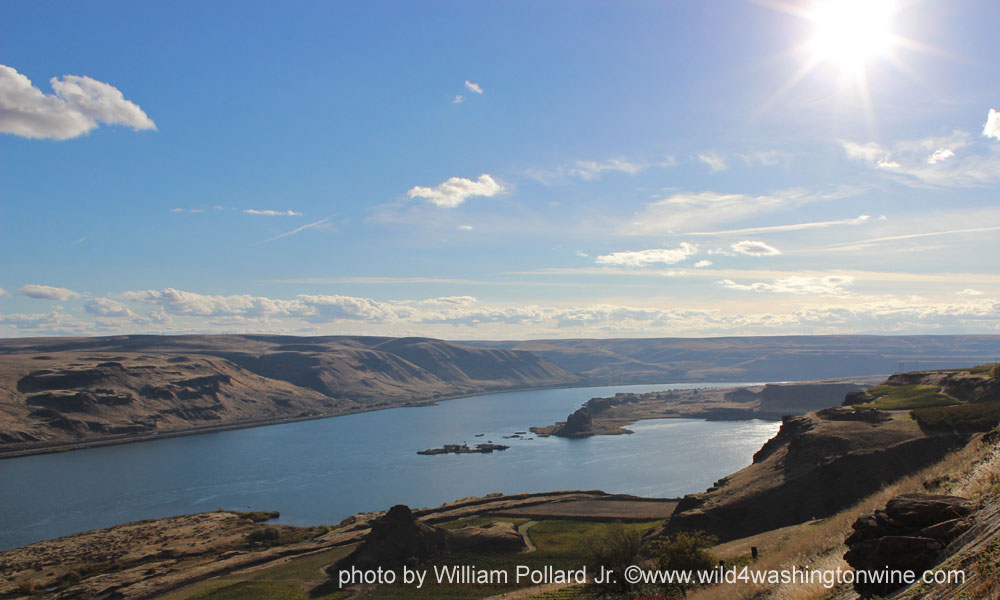
Favoring white over red grapes (64% vs 34%), Columbia Gorge AVA’s most planted varietals are: Chardonnay, Gewürztraminer, and Pinot Gris. Columbia Gorge AVA, is defined by the 80 mile Columbia River Gorge, that marks the dramatic transition from eastern desert to cool maritime climate on the western portion of the gorge. Cool-climate white grapes thrive in the western side of the AVA, (while eastern side is dedicated to warm-weather varieties – Bordeaux, Rhone, and Italian.
From the biodynamic winery of husband and wife dynamic duo, Poppy and James Mantone, the 2016 Syncline Grüner Veltliner, Columbia Gorge, is hand harvested, with native yeast fermentation in a combination of concrete egg (Celilo), Acacia barrels (Underwood Mt.), and neutral oak barrels (Bloxom). Fresh citrus fruit notes (grapefruit, lime), lifted sage aromas, with white pepper shines through, finishing with a beeswax character attributing to a richer mouthfeel and vibrant acidity. An admirable effort, especially for a young, new-world region.

Here’s a stellar example that imagination has no boundaries. Master Sommelier Nate Ready’s NV Hiyu Smockshop Band Atavus Vineyard Gewurztraminer, Columbia Gorge, a blend of 95% Gewurztraminer and 5% Pinot Gris, made from older vines, macerated for 4 days, ambient yeast, and bottled with solera-aged vintages, dating back to 2013, might have been a tad discerning for our humble palate. Think Spanish fino sherry meets French Arbois (Jura region), rendering an scintillating wine that screams for gastronomical pairing to unravel it’s mystery.
Yakima Valley AVA – Washington’s first approved AVA (1983), the largest sub-appellation of Columbia Valley, stretching from West to East, nestling sub-avas Snipes Mountain, Rattlesnake Hills, and Red Mountain, is also the agricultural hub of WA, producing nearly half of the state’s Rieslings and Chardonnays, also home to Washington’s oldest Cabernet Sauvignon vines at Otis (1957) and Harrison Hill (1963) vineyards.
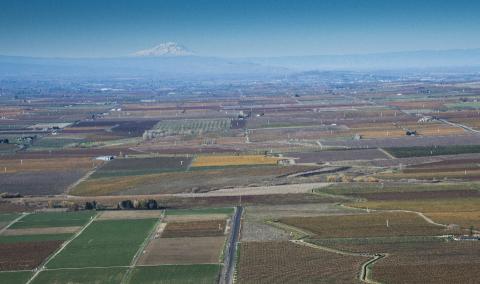
Fun Fact: Apples is the official state fruit of WA and Washington is the top producer in the U.S of certified organic apples. Yakima county is the leading producer of hops in America. Both favorable viticulture markers.
New kids on the block, Ali Mayfield and Martin Ray source Chardonnay from French Creek Vineyard in Yakima Valley for their, The Walls 2016 Martin’s Gold. A refined example of demonstrating the diversity in WA, where cooler regions produce graceful wines dominated by citrus and yellow apple notes while warmer regions like Horse Heaven Hills produce riper wines showcasing stone and tropical fruit, both regions connected with a vibrant acidic backbone.
Washington’s rising star Chris Peterson is the winemaker/co-owner to one of WA’s hottest winery Avennia. The 2015 Arnaut Syrah from Dick Boushey’s vineyard reveals both the warmth of the vintage (2015 being the hottest year on record) and coolness of the site, boasting richness of black and blue berries, savory meats and olives, with lip-smacking acidity and lingering finish. Think Persian grilled lamb kebobs served with saffron-scented basmati rice or pulled-pork barbecue sliders.

When I hear the word Syrah, I think of sweet black and blue berries, layered with savory notes of roasted meat and black olives, tingling tang of black pepper (rotundone – aromatic molecule also found in savory herbs – rosemary, marjoram, thyme). I expect succulent texture, powerful but sweet tannins, invigorating acidity, and a seductive, complex finish. Did you know DNA profiling suggest Pinot Noir is a great grandparent of Syrah?
Founder of Betz Family Winery Bob wears many hats including Master of Wine (MW) and consulting winemaker. The 2015 La Cote Patriache Red Willow Vineyard Syrah, is sourced exclusively from the revered Red Willow Vineyard, site of not only the oldest Syrah planting in WA (1986), but also the first plantings of Tempranillo, Viognier, Sangiovese, and Cab Franc by Mike Sauer and MW David Lake. Blessed with brightness of fruit and acid, this savory little number was brimming with brooding black berries, bacon fat, and dried orange peel. With some age and air, a generous slice of prime rib in it’s own jus, it will be a worthy contender to warm up your wintry evenings.
A sub-appellation encased within both the larger Columbia Valley AVA and Yakima Valley, the East-West flowing Rattlesnake Hills AVA, centered around the agricultural town of Zillah, distinguished feature is it’s diverse elevation – 850 – 3,085 feet.
The 2016 Savage Grace Wines Cot Dineen Vineyard Malbec, 100% whole-cluster fermentation using native yeast, remarkably light on it’s feet, dazzled with lively red fruit, a luscious paradigm of carbonic maceration.

Located on the Eastern edge of Yakima Valley, sub-AVA Red Mountain is WA’s warmest viticulture region, moderated by the Yakima river, is devoted to powerful reds – Cabernet Sauvignon, Merlot, Cabernet Franc, Syrah, Sangiovese, Malbec, and Petit Verdot.
Familiar as Blaufränkisch in Austria and Kékfrankos in Hungary, Lemberger swaggers a modest following in Washington, with Kiona Winery fabricating the first commercial bottling in the USA (1980). The estate 2014 Kiona Wine composed of 95% Lemberger with a touch of Carmenère, Malbec, Merlot, & Petite Verdot, unfolded with ultra bright red fruit, held together with medium body and ripe tannins.
Former winemaker of cult winery Bryant Family, Todd Alexander crafts opulent wines at Force Majeure. The 2015 Epinette Red Wine was supple and expressive of a right-bank Bordeaux blend (58% Merlot plus 22% Cabernet Franc, 15% Cabernet Sauvignon, and 5% Petit Verdot), the new French Oak rounds everything, making for one seriously sensual sipper.
Home to only six wineries, the second smallest appellation, named after the infamous cattle rancher Ben Snipes, Snipe Mountain AVA, also houses some of the oldest Cabernet Vines at Harrison Hills, dating back to 1963.
An epitome of elegance, winemaker Chris Upchurch’s Cabernet dominated 2014 De Lille Cellars Harrison Hill Red Wine, was packed with ripe, dark berry fruit, pretty violets, spiked with well-integrated oak notes of cigar box and cedar, finishing with beautiful balance. It’s a seriously graceful wine that will shine brighter with short-term cellaring.

Walla Walla Valley AVA: Synonymous with Walla Walla is Norm McKibben, grape stalwart who spent 1/4 million dollars on learning to grow grapes from the school of hard knocks. Not only did he establish vineyards as early as 1980s, supplying fruit to local vintners, he personally funded vineyard expansion throughout the valley, in particular the prized Sevein project, at the newly minted AVA – Rocks District of Milton Freewater (2015). Which is confined on the Oregon side of Walla Walla, sprawled with galet like basalt stones most commonly sighted in France’s Châteauneuf-du -Pape region of Rhone Valley.
Dominated by red grapes, Walla Walla is treasured for it’s wind-blown loess soil (sandy/silt – a by product of the Ice Age floods, 15,000 years ago) and alluvium deposits. These wines are expressions of powerful, intense, black fruit driven, highly structured, cellar-worthy gems.
One of the world’s most planted varietal, Sardinia’s Cannonao (Italy), better known as Carignan and Grenache, this thin-skinned, late ripeness fruit’s fondness for heat makes it a suitable candidate for Washington’s arid, dry conditions. The splurge-worthy 2014 Cayuse Vineyards God Only Knows Grenache, from the biodynamic Armada vineyard, by the Champagne native Christopher Baron, was loaded with dark fruits, exotic spices, and gaminess. Full bodied, dense, and beautifully balanced, for a memorable meal, pair it with braised lamb shanks or duck stew.
Another stalwart of Syrah, winemaker Morgan Lee sources fruit from the sustainably farmed Stoney Vine vineyards from the Rocks District of Milton-Freewater AVA in Oregon. The 2015 Two Vintners ‘Some Days are Stones’ Syrah, Walla Walla Valley expressed enticing aromas of sweet black fruit, laced with perfumed flowers, and finished with seamless balance.

One of the greatest values in America money can buy, happens to be the luscious red fruit driven Merlot, from the cult winery Leonetti Cellar, a pinnacle of juiciness and perfection. The 2015 Merlot, a baby in it’s youth, but what an impressive one, aims to please even the merlot-haters (still stuck in Sideways debacle) for years to come.
The fifth generation farmer in the valley, Rick Small also pioneered viticulture by launching the 2nd winery in Walla Walla – Woodward Canyon in 1981. The 2014 Woodward Canyon Charbonneau, is a blend of 41% Cabernet Sauvignon, 30% Merlot, 17% Cabernet Franc, and 12% Petit Verdot. From organic vineyards, recycling cardboard, cork recycling program operated by ReCORK by Amorim, utilizing wine pomace to control weeds and retain moisture, Blue Sky renewable energy program from Pacific Power, to using recyclable and compostable molded fiber inserts for wine shipments, Woodward Canyon’s principles are embedded in environmental stewardship.

Eponymous to the thirty-five lakes that define it’s area, where Riesling reigns supreme, Ancient Lakes AVA boasts a cornucopia of 65 soil types, with elevations ranging from 570 to 1,912 feet, rooted within the Columbia Valley AVA, is also the driest, receiving only 6″ annual rainfall.
Sourced from the renowned Evergreen Vineyard dedicated to Riesling and Chardonnay plantings, the 2015 Tempus Cellars Riesling, pays homage to Rieslings hallowed ground – Mosel with notes of white peaches with a drizzle of honey and ripe lemon. A patio charmer that will offer all-year respite from Florida’s blistering heat.
Sandwiched along the Washington-Oregon border, Horse Heaven Hills AVA is a warmer region with significant wind influence due to proximity to the proximity to Columbia River. It is prized for it’s red varietals – Cabernet Sauvignon and Merlot, also home to the coveted Champoux vineyard (pronounced shampoo), the source of some of the state’s best fruit to super-star wineries – Quilceda Creek, Andrew Will, Fidelitas, and Woodward Canyon, to name a few.
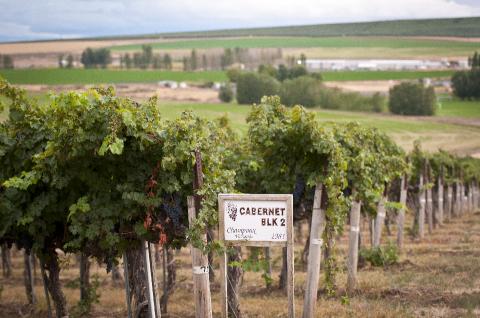
The 2014 Chateau Ste. Michelle Canoe Ridge Estate Cabernet Sauvignon a blend of 97% Cabernet & 3% Merlot, aged for 22 months in 51% New French Oak, is a stellar example of large-scale producers churning out high quality wines for reasonable prices. Bravo!!
Washington State unequivocally is a treasure trove of viscerally thrilling gems, dipped in finesse and sensuality. From the unsung heroes – the white grapes to riveting reds, and mind you, at ridiculously reasonable prices, there has never been a better time to initiate your immersion into WA State wineries, where time will only unravel it’s incredible potential and Washington will continue to be respected as one of the greatest regions in the world of wine.
Research: Washington State Wine, Guild Somm, Jancis Robinson Purple Pages.
